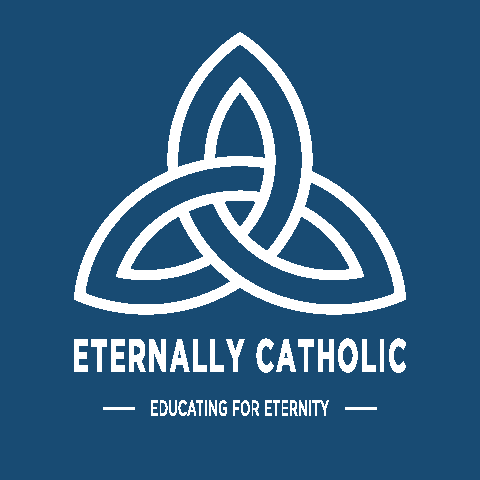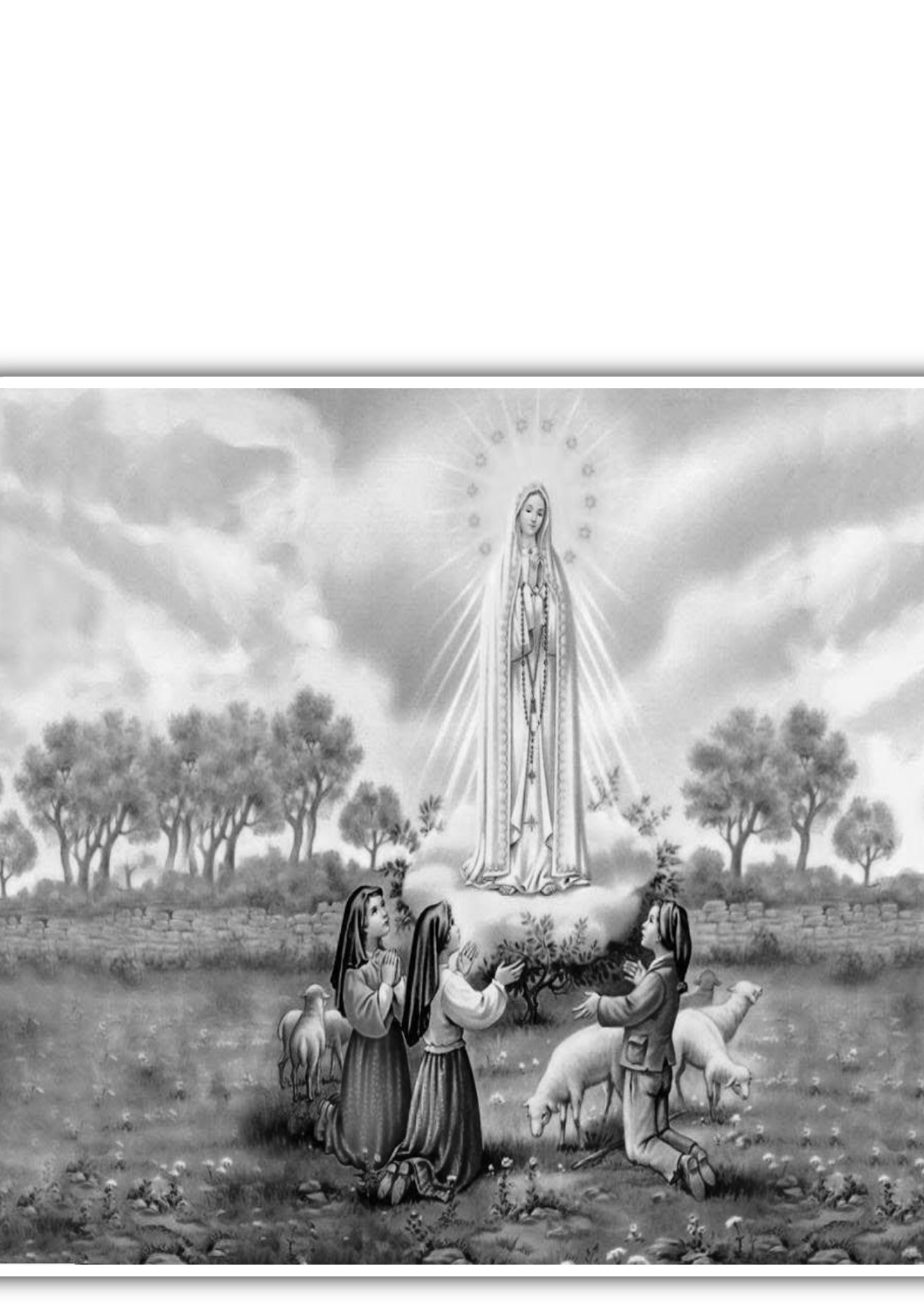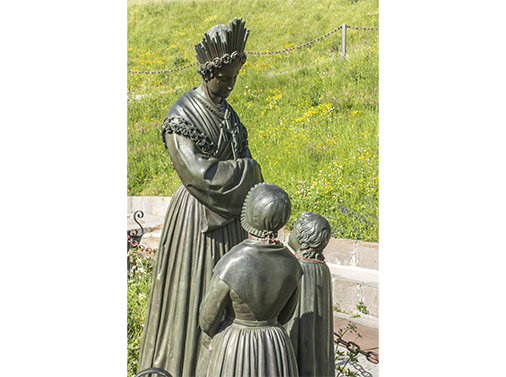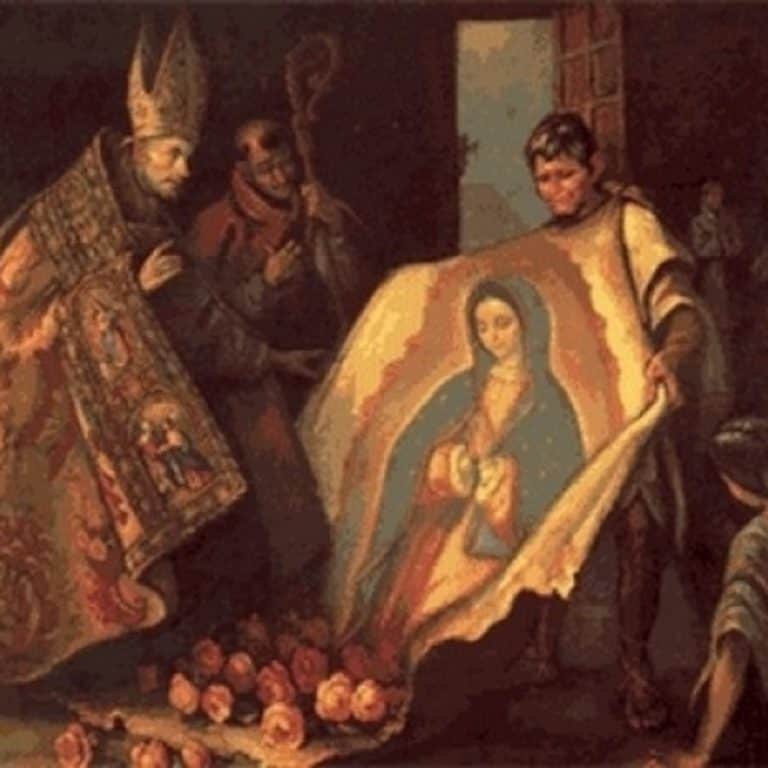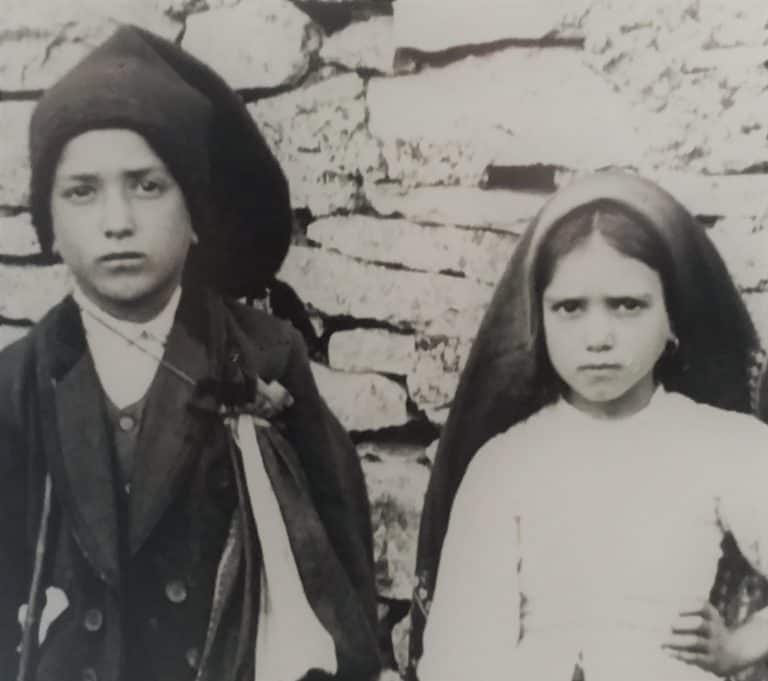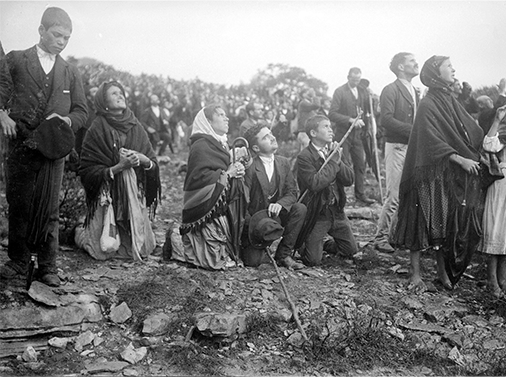What Our Lady of Fatima Actually Requested vs. The 2022 Consecration
The March 2022 Fatima consecration sparked significant discussion within the Catholic Church when Pope Francis consecrated both Russia and Ukraine to the Immaculate Heart of Mary. However, this act differed notably from the original request made during the Fatima apparitions of 1917.
Our Lady of Fatima specifically requested the consecration of Russia alone to her Immaculate Heart, promising this would lead to Russia’s conversion and world peace. In fact, Sister Lucia Dos Santos, one of the Fatima visionaries, emphasized that the Holy Father and all bishops must consecrate Russia exclusively – not the world or other nations. The consequences of not following these precise instructions were clearly outlined: wars, famine, and persecution of the Church would follow.
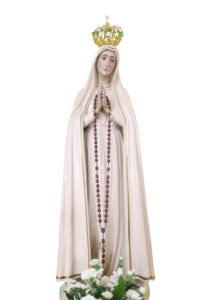
In this comprehensive analysis, we’ll examine the original Fatima consecration request, compare it with various consecration attempts throughout history, and evaluate whether the 2022 ceremony fulfilled Our Lady’s specific requirements. We’ll also explore Sister Lucia’s clarifications and the theological implications for our current times.
What was the Original Fatima Request for Consecration?
Initially, the request for the consecration of Russia emerged through a series of divine communications at Fatima in 1917. We can trace these sacred instructions through three distinct phases, each adding clarity to Our Lady’s wishes.
1) Our Lady’s Exact Words at Fatima
The Virgin Mary’s message at Fatima was both precise and prophetic. In the July 13, 1917 apparition, she declared:
“God wishes to establish in the world devotion to my Immaculate Heart. If what I say to you is done, many souls will be saved and there will be peace“.
Subsequently, she outlined the consequences of ignoring her request, warning that Russia would
“spread her errors throughout the world, causing wars and persecutions of the Church“.
2) The Specific Requirements Given to Sister Lucia
Through Sister Lucia’s documented communications, we understand the essential elements for a valid consecration:
- The Pope must unite with all bishops worldwide
- The consecration must specifically name Russia
- It must be done on one special day
- All bishops must participate in union with the Pope
Furthermore, Our Lady linked this consecration with the Devotion of the Five First Saturdays, as revealed in Sister Lucia’s letters from May 1930.
3) Timeline of the Request and Its Clarifications
The development of this sacred request unfolded across several decades:
- July 1917: Initial promise at Fatima to request Russia’s consecration
- June 1929: Our Lady fulfilled her promise, stating
“The moment has come in which God asks the Holy Father, in union with all the Bishops of the world, to make the consecration of Russia“
- December 1940: Sister Lucia wrote to Pope Pius XII, clarifying that Our Lord Himself requested the consecration
- March 1982: Sister Lucia provided final clarification about the requirements through the Papal Nuncio
Notably, Sister Lucia emphasized throughout her communications that the consecration must focus specifically on Russia. In her own words:
“The Holy Father has already consecrated Russia, including it in the consecration of the world, but it has not been done in the form indicated by Our Lady“.
Why Previous Consecration attempts have fallen short?
We can trace several significant attempts to fulfill Our Lady of Fatima’s consecration request throughout the 20th century. Let’s examine these crucial moments in Catholic history.
A) Pope Pius XII’s 1942 and 1952 Consecrations
On October 31, 1942, amid World War II, Pope Pius XII made his first attempt at consecration through a radio broadcast to Portugal. Consequently, he consecrated the entire world to the Immaculate Heart of Mary, though without explicitly mentioning Russia.
A decade later, on July 7, 1952, Pius XII took another significant step by specifically consecrating “the peoples of Russia” to the Immaculate Heart.
Nevertheless, this consecration still fell short of Our Lady’s requirements because it lacked the crucial element of episcopal participation worldwide.
B) Pope John Paul II’s 1984 Consecration
The most notable consecration attempt came under Pope John Paul II on March 25, 1984. Here’s what made this attempt particularly significant:
- The Pope sent letters to all world bishops, including Orthodox leaders, requesting their participation
- He performed the consecration before the original Fatima statue, specially brought to Rome
- Though Russia wasn’t explicitly mentioned in the public text, sources indicate the Pope quietly included Russia during the ceremony
C) Other Notable Consecration Attempts
Throughout this period, we saw several other meaningful attempts:
- Pope Paul VI’s 1964 Consecration: At Vatican II’s conclusion, he entrusted humanity to the Immaculate Heart
- Pope John Paul II’s Earlier Attempts:
- May 13, 1982: First attempt at Fatima
- October 1983: Renewal at the Synod of Bishops
Moreover, the 1984 consecration marked a turning point. While some argue it didn’t completely match Our Lady’s original requirements, prominent authorities – including the Pope, local bishops, theologians, and most importantly.
Through these various attempts, we observe a gradual progression toward fulfilling the precise requirements outlined by Our Lady of Fatima. Certainly, each consecration contributed uniquely to this sacred mission, though debates about their complete fulfillment continue to shape discussions today.
Let us be clear, every consecration made in good will and intention is acceptable to God, Our Lord and Our Lady, however following the exact criteria is beyond dispute here. All these consecrations fell short.
What about the March 25, 2022 Consecration as made by Pope Francis?
On March 25, 2022, we witnessed a historic moment as Pope Francis performed a solemn consecration at St. Peter’s Basilica, addressing both Russia and Ukraine in an unprecedented act.
Format and Participants of the March 25 Ceremony
The consecration ceremony took place during a Lenten penance service at 5 p.m. in St. Peter’s Basilica. Altogether, the event brought together:
| Participants | Location |
|---|---|
| Pope Francis | St. Peter’s Basilica, Rome |
| Cardinal Krajewski | Fatima, Portugal |
| Global Bishops | Their respective dioceses |
| Catholic Faithful | Worldwide participation |
Comparatively, this consecration achieved remarkable global participation, as bishops from England, Wales, Latin America, the Caribbean, and the Philippines joined in unity with the Pope.
Comparison to Original Requirements
The 2022 consecration incorporated several elements from Our Lady’s original request. Undoubtedly, the most significant aspect was the explicit mention of Russia in the consecration formula:
“Mother of God and our Mother, to your Immaculate Heart we solemnly entrust and consecrate ourselves, the Church and all humanity, especially Russia and Ukraine“.
Key Differences and Similarities
We can identify these distinctive features of the 2022 consecration:
- Alignment with Original Request:
- Performed on March 25 (same date as John Paul II’s 1984 consecration)
- Global episcopal participation
- Explicit mention of Russia
- Notable Differences:
- Addition of Ukraine alongside Russia
- Inclusion of “all humanity” in the consecration
- Performance during a penitential service
Besides the formal ceremony in Rome, Cardinal Krajewski simultaneously performed the consecration at Fatima, adding a profound connection to the original apparition site.
Accordingly, this dual location approach created a symbolic bridge between the historical request and its modern fulfillment.
The Vatican’s approach demonstrated careful attention to detail, as Pope Francis sent formal invitations to all Catholic bishops worldwide, requesting their voluntary participation at the designated time. This coordinated effort resulted in an unprecedented global spiritual unity, with bishops across continents joining in the consecration prayers.
From our analysis, we observe that this consecration marked a significant departure from previous attempts by directly naming Russia while simultaneously addressing contemporary geopolitical realities through the inclusion of Ukraine. The ceremony’s timing amid the ongoing conflict between these nations added particular urgency and relevance to this sacred act.
It is also worth mentioning that Pope Francis’ insistence on peace rather than the conversion of Russia is another short-fall of the Consecration made on March 25, 2022.
The mention of all humanity, the Church, Russia and the Ukraine raises further doubt of meeting the criteria outlined by Sister Lucia as revealed by Our Lady.
What is a Consecration?
From the Catholic Encyclopedia “Advent”, consecration is defined as:
“Consecration, in general, is an act by which a thing is separated from a common and profane to a sacred use, or by which a person or thing is dedicated to the service and worship of God by prayers, rites, and ceremonies.”
Further, Wikipedia and other secular lexicons define consecration as:
“… the transfer of a person or a thing to the sacred sphere for a special purpose or service. The word consecration literally means “association with the sacred. Persons, places, or things can be consecrated, and the term is used in various ways by different groups. The origin of the word comes from the Latin stem consecrat, which means dedicated, devoted,
and sacred.”
In the Catholic Mass, the priest puts aside the bread and the wine/water to consecrate into the Body and Blood of Jesus Christ. This is also true of the Consecration of Russia to the Immaculate Heart of Mary. God intends to use Russia as His instrument for peace amongst other Divine purposes.
Importance of Specific Mention of Russia
Evidently, the mention of Russia held particular significance. In a 1946 interview, Sister Lucia markedly stated:
“What Our Lady wants is that the Pope and all the bishops in the world shall consecrate Russia to her Immaculate Heart on one special day“.
When questioned about previous consecrations, Sister Lucia provided essential clarification:
“The Holy Father has already consecrated Russia, including it in the consecration of the world, but it has not been done in the form indicated by Our Lady“.
This statement helped shape future consecration attempts.
Understanding ‘Conversion’ in the Fatima Context
Looking deeper into the Fatima message, we discover that understanding ‘conversion’ forms the cornerstone of Our Lady’s requests. Primarily, this concept extends far beyond mere religious affiliation.
Theological Meaning of Conversion
In biblical language, conversion represents a profound transformation of the heart. We find this beautifully explained in Cardinal Ratzinger’s theological commentary, where he defines the ‘heart’ as “the center of human life, where reason, will, temperament and sensitivity converge“.
Consider these dimensions of authentic conversion:
| Aspect | Meaning |
|---|---|
| Spiritual | Return to God’s grace |
| Personal | Amendment of life |
| Communal | Restoration of worship |
| Social | Peace and justice |
Historical Understanding of Russia’s Role
Essentially, Sister Lucia provided remarkable insight about Russia’s conversion in 1946. When questioned by a young Russian girl about how this conversion would manifest, she explained that it would come through “the Eastern Orthodox Church and ‘the Oriental rite,’” suggesting a reconciliation between the Russian Orthodox Church and Roman Catholic Church.
The significance of Russia’s role emerges through multiple aspects:
- As a nation chosen for special consecration
- As a vehicle for either spreading errors or grace
- As a symbol of humanity’s potential for transformation
The Promise of Peace and Its Conditions
At the heart of the Fatima message lies a profound promise of peace, contingent upon specific conditions that Our Lady outlined through the three shepherd children. Let’s explore these divine assurances and their implications for our world today.
Our Lady’s Specific Promises
The Virgin Mary’s promises at Fatima centered around peace and conversion.
“If my requests are heeded,” she declared, “Russia will be converted, and there will be peace“. We can outline the key promises and their corresponding conditions:
| Promise | Required Condition |
|---|---|
| World Peace | Daily Rosary Prayer |
| Russia’s Conversion | Consecration to Immaculate Heart |
| Salvation of Souls | First Saturday Devotions |
| Period of Peace | Fulfillment of All Requests |
Primarily, Our Lady emphasized that these promises weren’t merely about external peace. “The peace that Our Lady predicted will not consist merely in acts of external courtesy, but will penetrate the souls of men“.
Timeline for Expected Results
In examining the timeline of expected results, we note several key markers:
- First World War’s End: Our Lady promised this would occur if people prayed the Rosary daily
- Warning of Second World War: “The war is going to end: but if people do not cease offending God, a worse one will break out“
- Future Period of Peace: “In the end, my Immaculate Heart will triumph… and a period of peace will be granted to the world“
Notably, the fulfillment of these promises operates on divine timing rather than human expectations. “Like the King of France, they will repent and do it, but it will be late“.
Historical Precedents of Divine Intervention
Throughout the Fatima narrative, we’ve witnessed remarkable instances of divine intervention. Essentially, these events serve as testimony to heaven’s active role in human history:
- The Miracle of the Sun (October 13, 1917): Witnessed by thousands as promised
- Aurora Borealis of 1938: Occurred as a predicted sign before World War II
- Multiple documented miraculous cures: “More than a hundred contradictions of the natural physical law have been registered at Fatima“
The Peace Plan from Heaven, as outlined by Our Lady, encompasses four fundamental requests:
- “Offer daily the sufferings that God permits in your life for the conversion of sinners“
- “Pray the Rosary every day in honor of Our Lady of the Rosary“
- “Consecrate yourself to the Immaculate Heart of Mary“
- “Practice the Communion of Reparation on the First Saturday of every month“
Ultimately, these conditions reflect a comprehensive spiritual program aimed at individual and collective transformation.
“Repentance, prayer, sacrifice — these are conditions of peace, for they are the means by which man is remade”
Evaluating Current World Events
As we examine today’s global landscape, the prophecies of Fatima take on renewed significance. Primarily, we find ourselves witnessing unprecedented challenges to world peace, with conflicts that seem to echo Our Lady’s warnings.
Russia’s Current Global Role
Today, we observe Russia’s military actions in Ukraine, marking a significant shift in global politics. Essentially, this situation prompts us to reflect deeply on Our Lady’s original message about Russia’s role in world events.
Looking at current developments, we note these key patterns:
- Intensifying global tensions
- Humanitarian crises in conflict zones
- Growing concerns about nuclear threats
Signs of Fulfillment or Lack Thereof
When analyzing the fulfillment of Fatima’s prophecies, we must consider both spiritual and temporal aspects. Notably, Pope Francis has made over 150 appeals for peace in Ukraine and more than 60 appeals regarding Middle East conflicts in recent months.
| Conflict Zone | Humanitarian Impact |
|---|---|
| Ukraine | Widespread displacement |
| Middle East | 31,000 casualties in 5 months |
| Global | Multiple ongoing conflicts |
Our analysis reveals that while some aspects of the Fatima prophecies appear fulfilled, others remain in progress. “The passion for community politics and multilateralism seems like a beautiful memory of the past,” notes Vatican sources highlighting the challenges facing global peace efforts.
Significantly, we recognize that Our Lady’s message at Fatima wasn’t just about geopolitical events but about spiritual transformation. As current conflicts unfold, we’re reminded that “keeping the peace requires a lot of work. It’s a task between nations but it begins in the heart of each person“.
Future Implications and Expectations
Looking toward the horizon of Our Lady of Fatima’s prophecies, we find ourselves at a crucial juncture in salvation history. As faithful observers of the Fatima message, we must carefully consider what lies ahead.
Potential Need for Another Consecration
Primarily, we observe that Pope Benedict XVI’s statement in 2010 remains significant:
“we would be mistaken to think that Fatima’s prophetic mission is complete”
In essence, this raises important questions about future consecration needs.
We note these key considerations:
| Aspect | Current Status | Future Implications |
|---|---|---|
| Prophecy Fulfillment | Partial | Ongoing vigilance needed |
| World Peace | Incomplete | Further action required |
| Russia’s Role | Active conflicts | Continued prayer necessary |
The Vatican’s position underscores that “Even if the events to which the third part of the Secret of Fatima refers now seem part of the past, Our Lady’s call to conversion and penance remains timely and urgent today“.
What is the Role of the Faithful?
Ultimately, we recognize our essential role in supporting the consecration’s effectiveness. The Fatima message outlines specific actions for the faithful:
- Daily Devotions:
- Rosary prayer
- Eucharistic adoration
- First Saturday reparations
- Personal Consecration:
- Dedication to the Immaculate Heart
- Living the consecration through daily actions
- Offering sacrifices for conversion
Analogous to the children of Fatima, we’re called to embrace “the insistent invitation of Mary Most Holy to penance“/ This invitation represents “nothing but the manifestation of her maternal concern for the fate of the human family“.
Has the Fatima Message and Third Secret of Fatima completed?
Looking forward, we understand that
“the consecration of Russia will hasten the hour of the triumph of the Immaculate Heart, bringing new graces of conversion to the world“. Heaven warned that the Consecration of Russia to the Immaculate Heart of Mary will be done but it will be late.
Further, it is my view that the Third Secret remains a secret.
Conclusion
Fatima’s message remains powerfully relevant today, especially as we witness global conflicts that mirror Our Lady’s warnings. Though debates continue about various consecration attempts.
The triumph of the Immaculate Heart and the Consecration of Russia will happen as requested. As await this we as the faithful can hold our end of the request by our personal response through prayer i.e. The Daily Rosary, penance and sacrifice, and dedication to the First Saturday devotions.
Looking ahead, we must stay alert to both spiritual and temporal signs while actively participating in Our Lady’s peace plan.
The March 25, 2022 consecration failed to heed the request as instructed by Our Lady and Sister Lucia, like all previous consecrations. God will listen and respond to all our requests and heed all our consecrations.
Ultimately, Our Lady calls us to spiritual transformation – both personal and collective – as the surest path to authentic peace.
